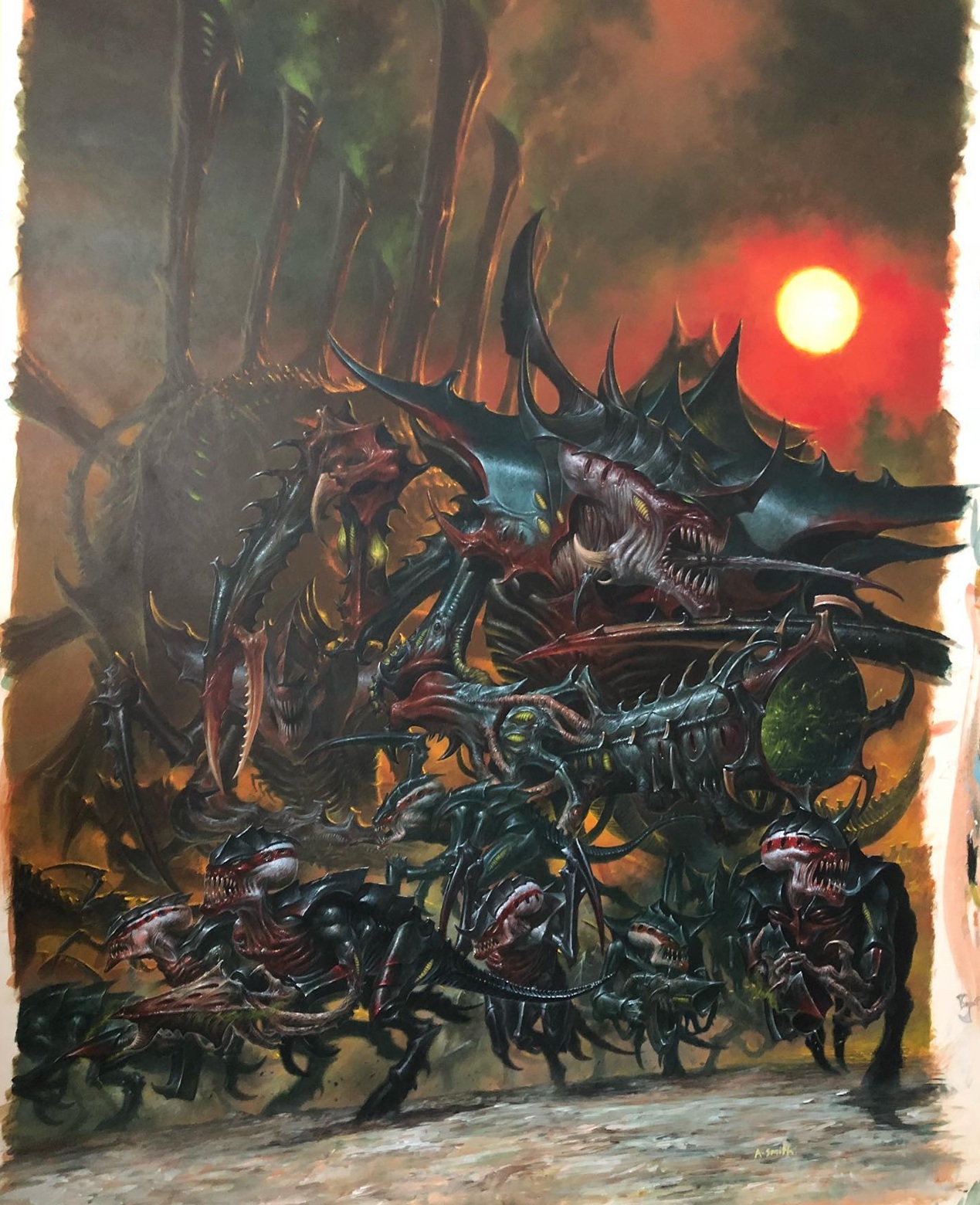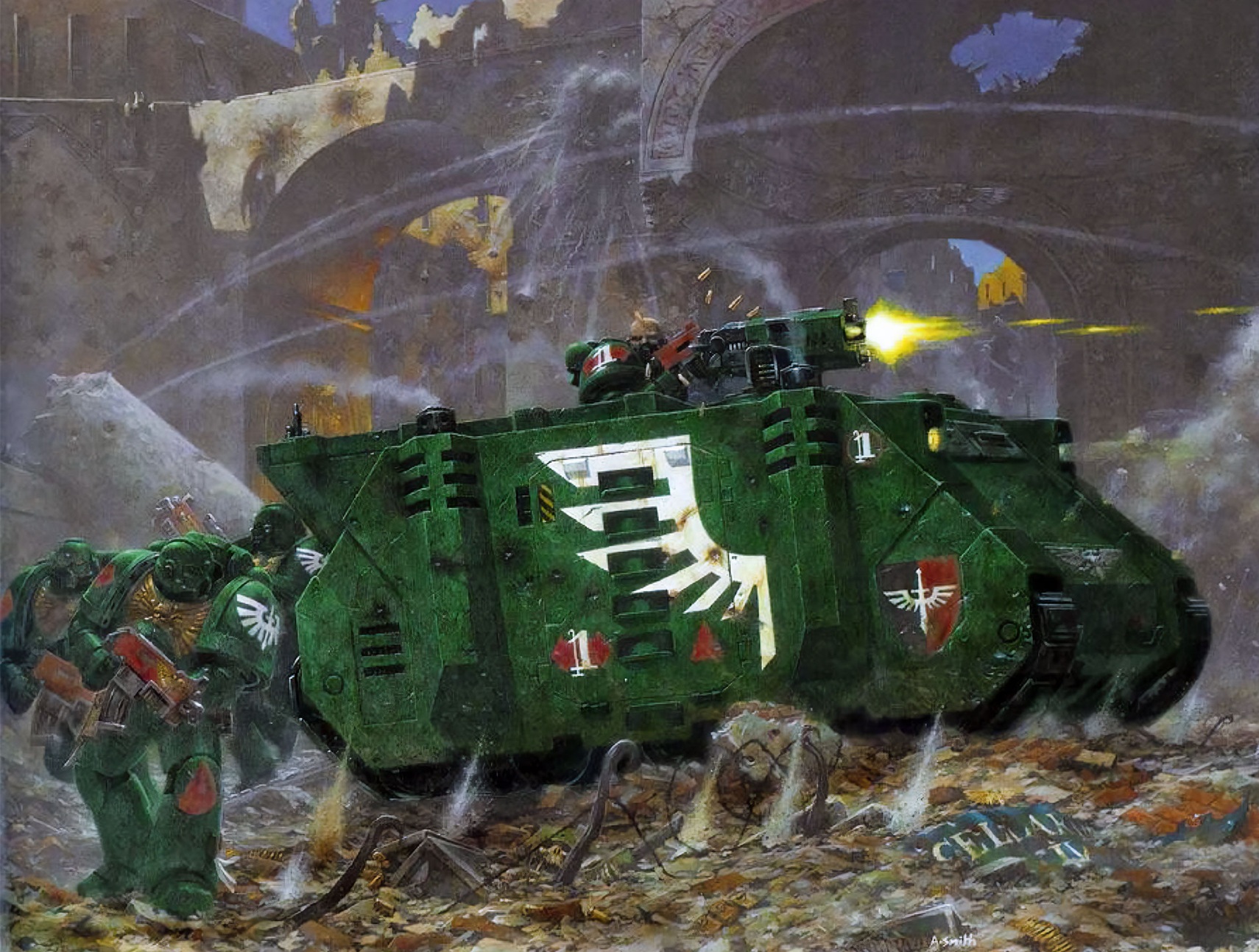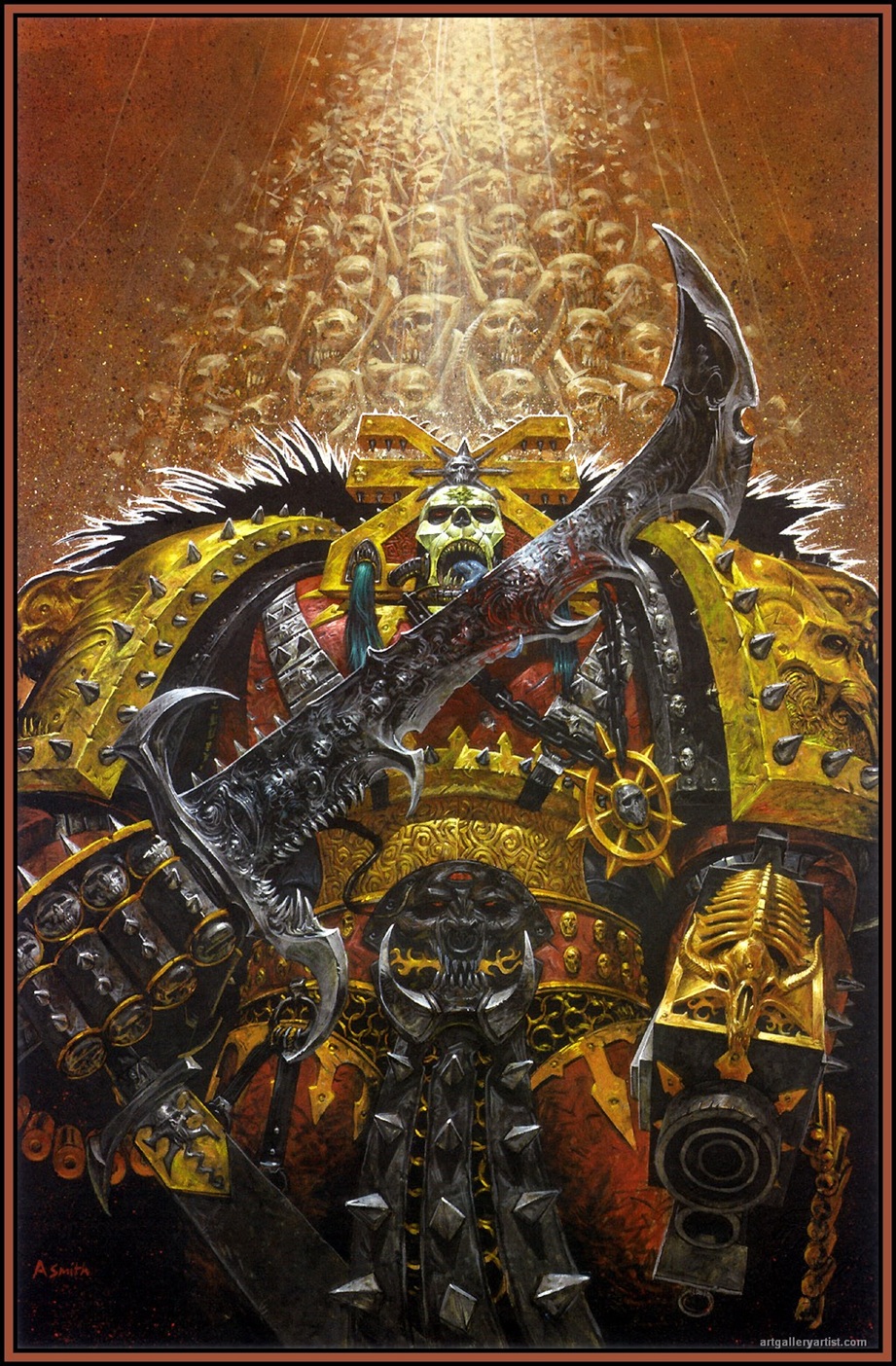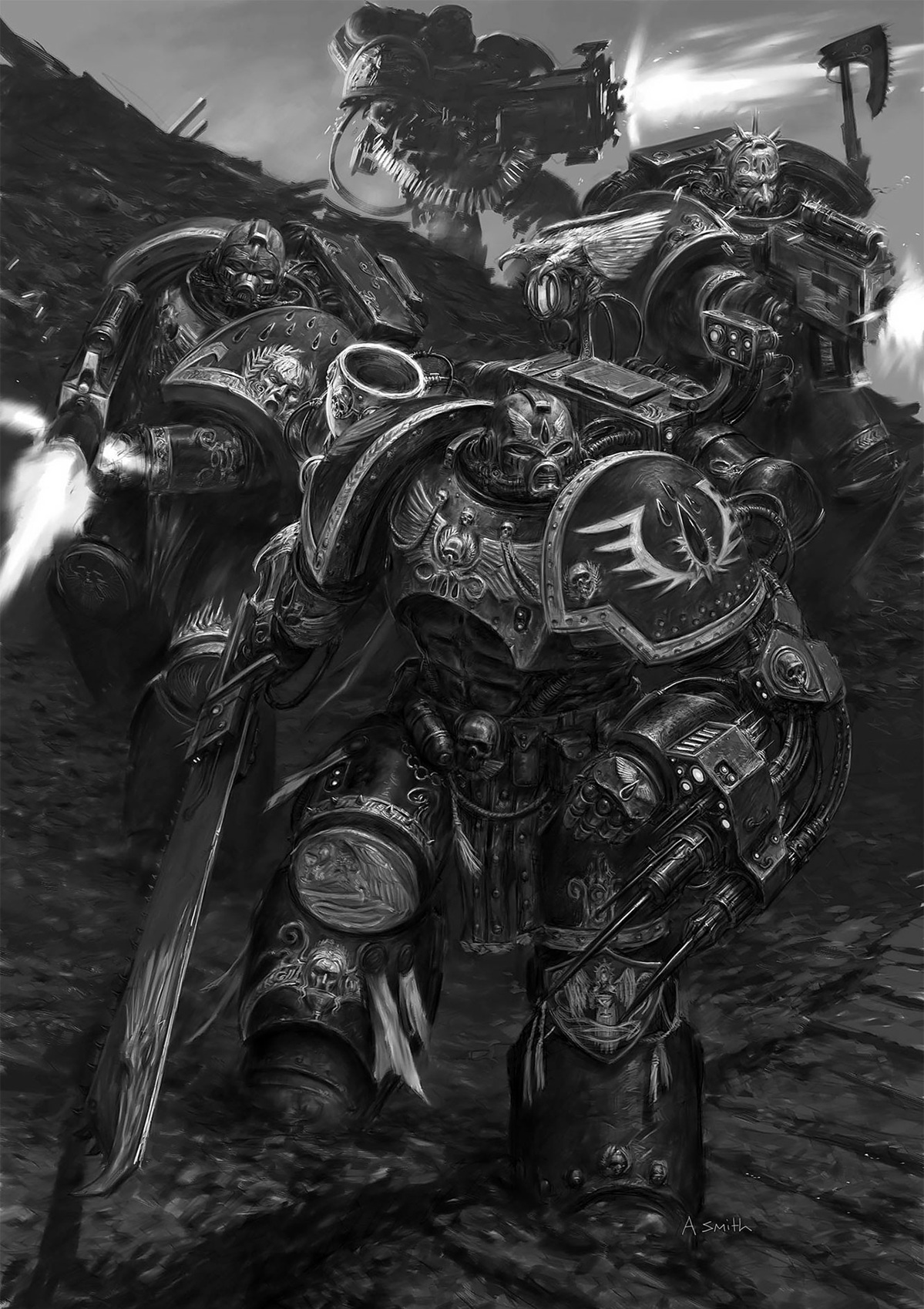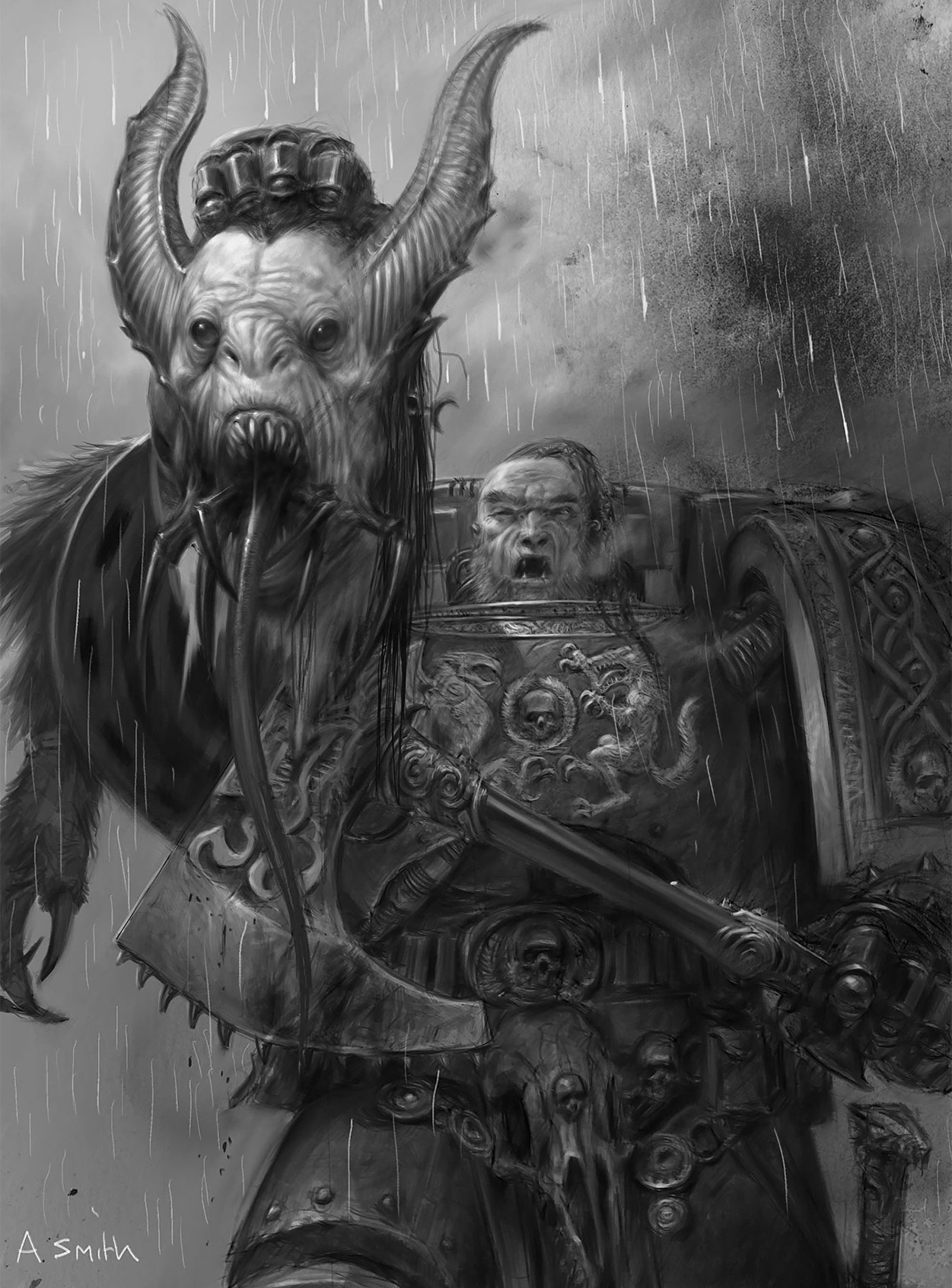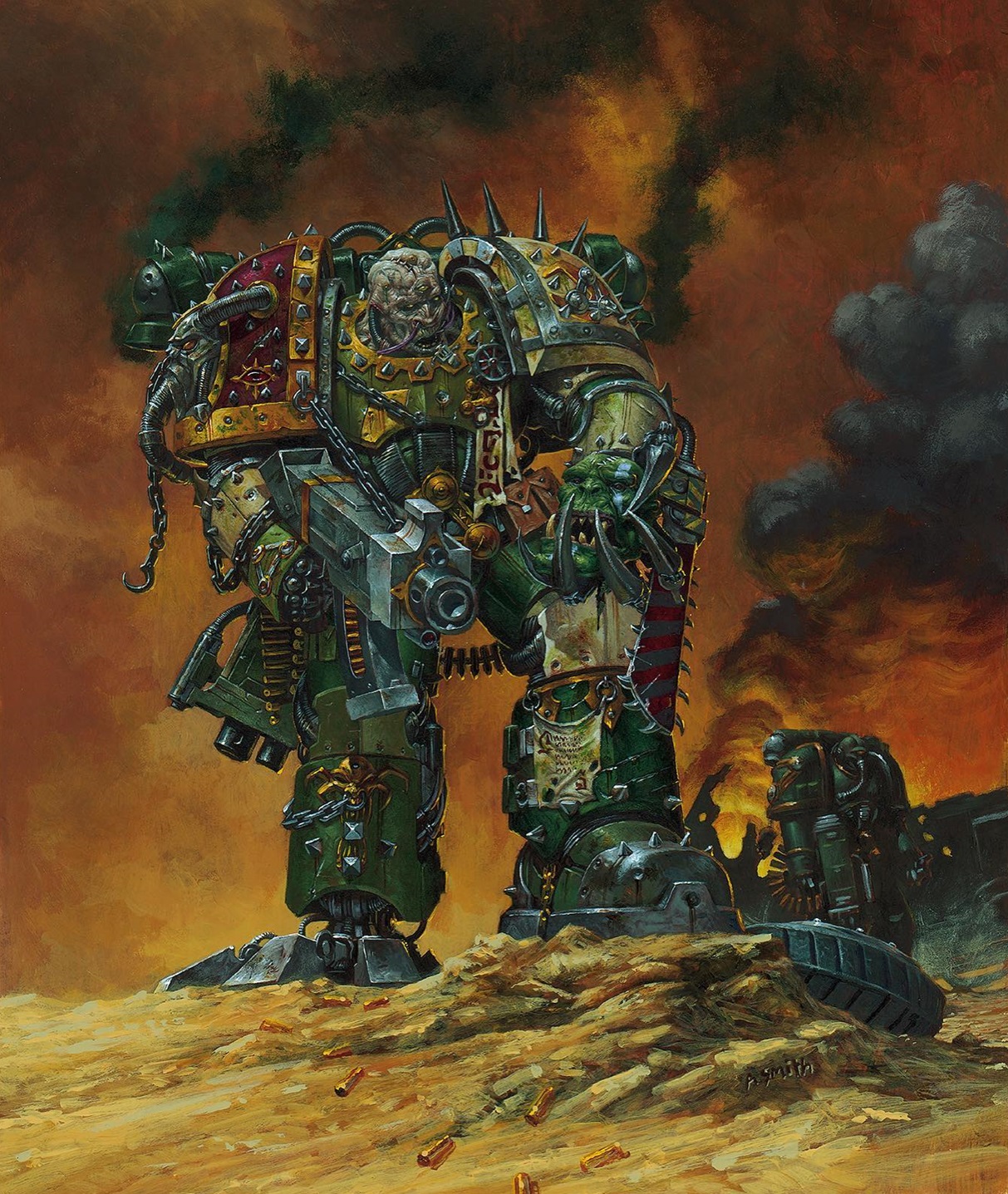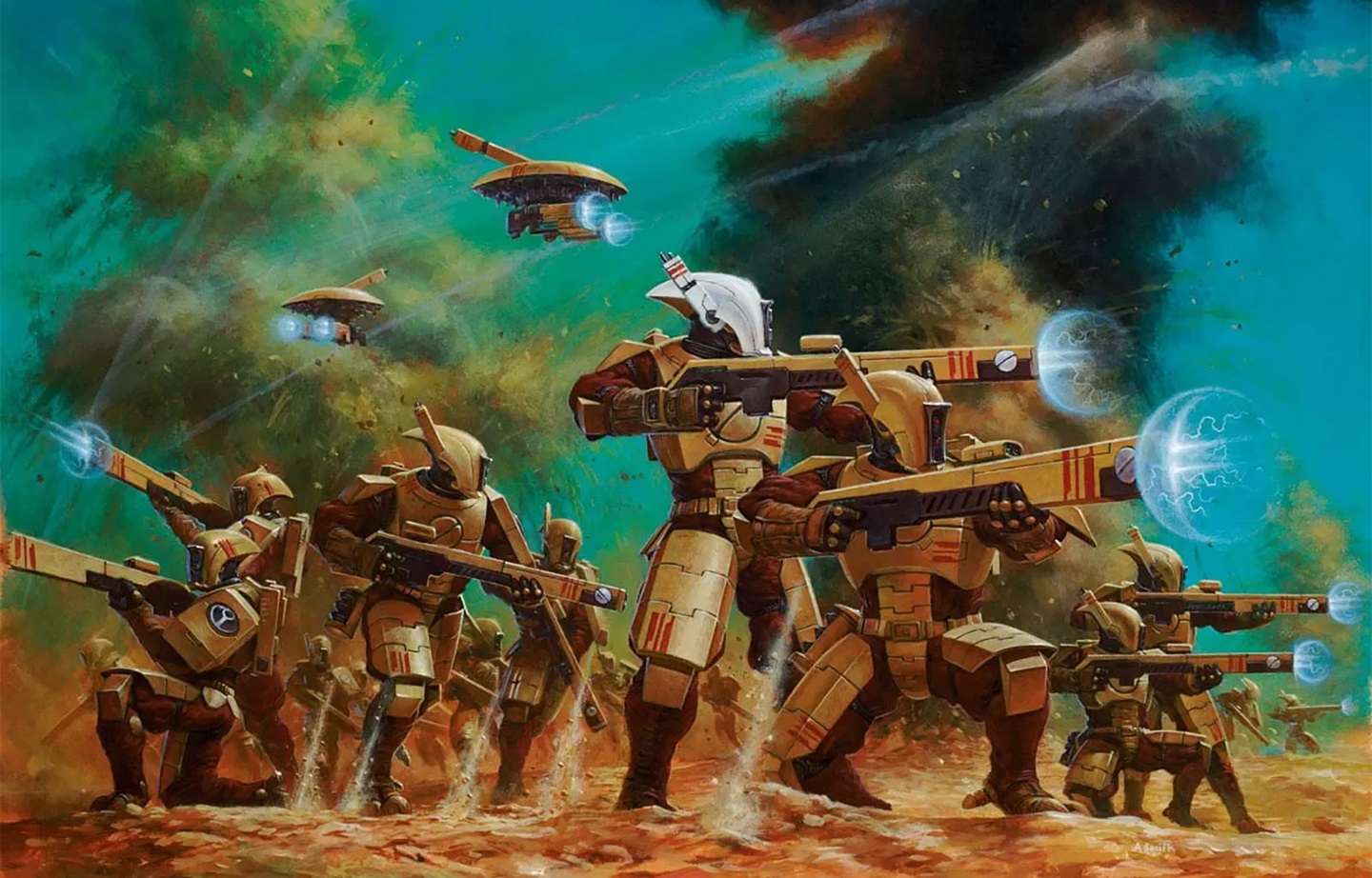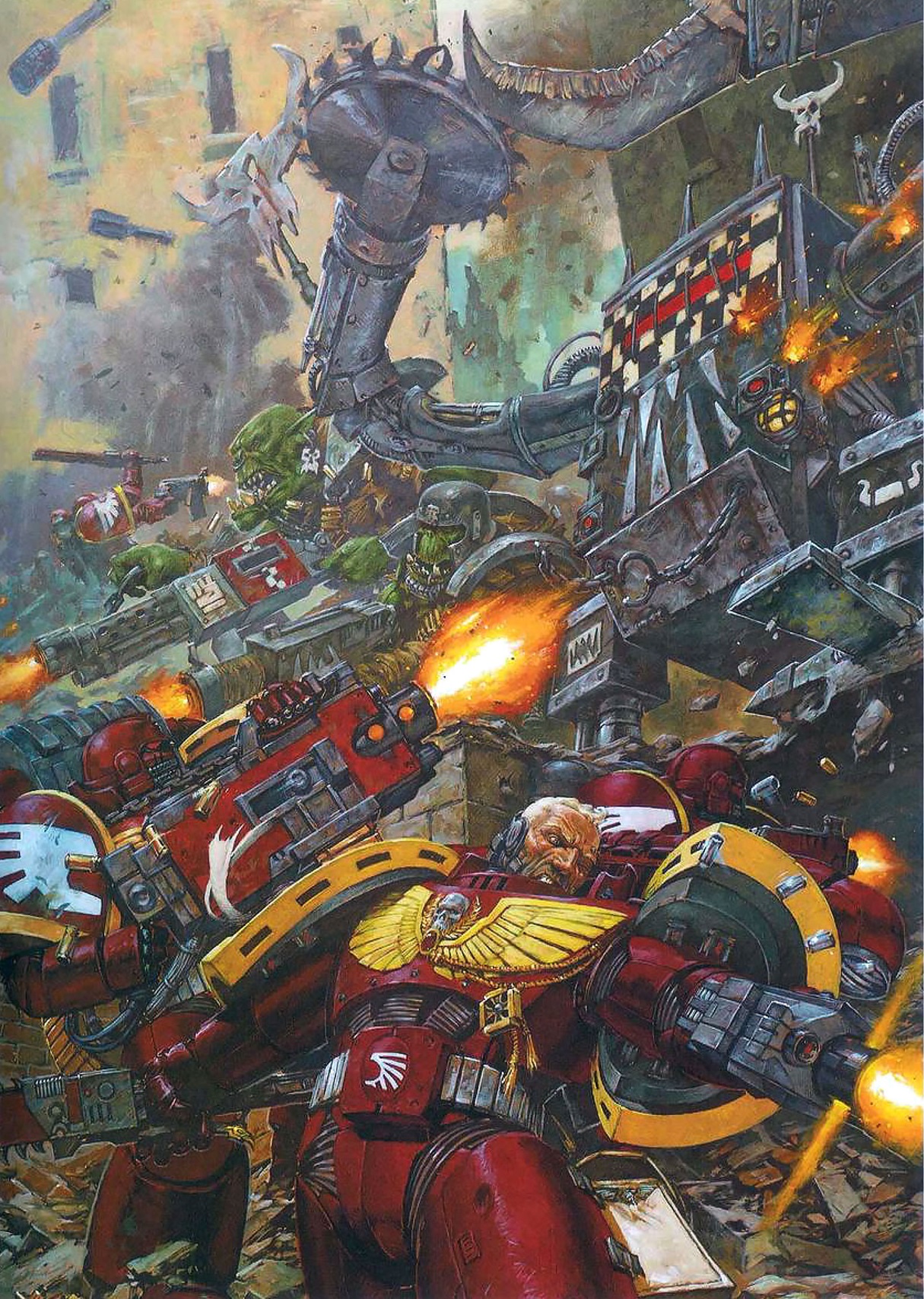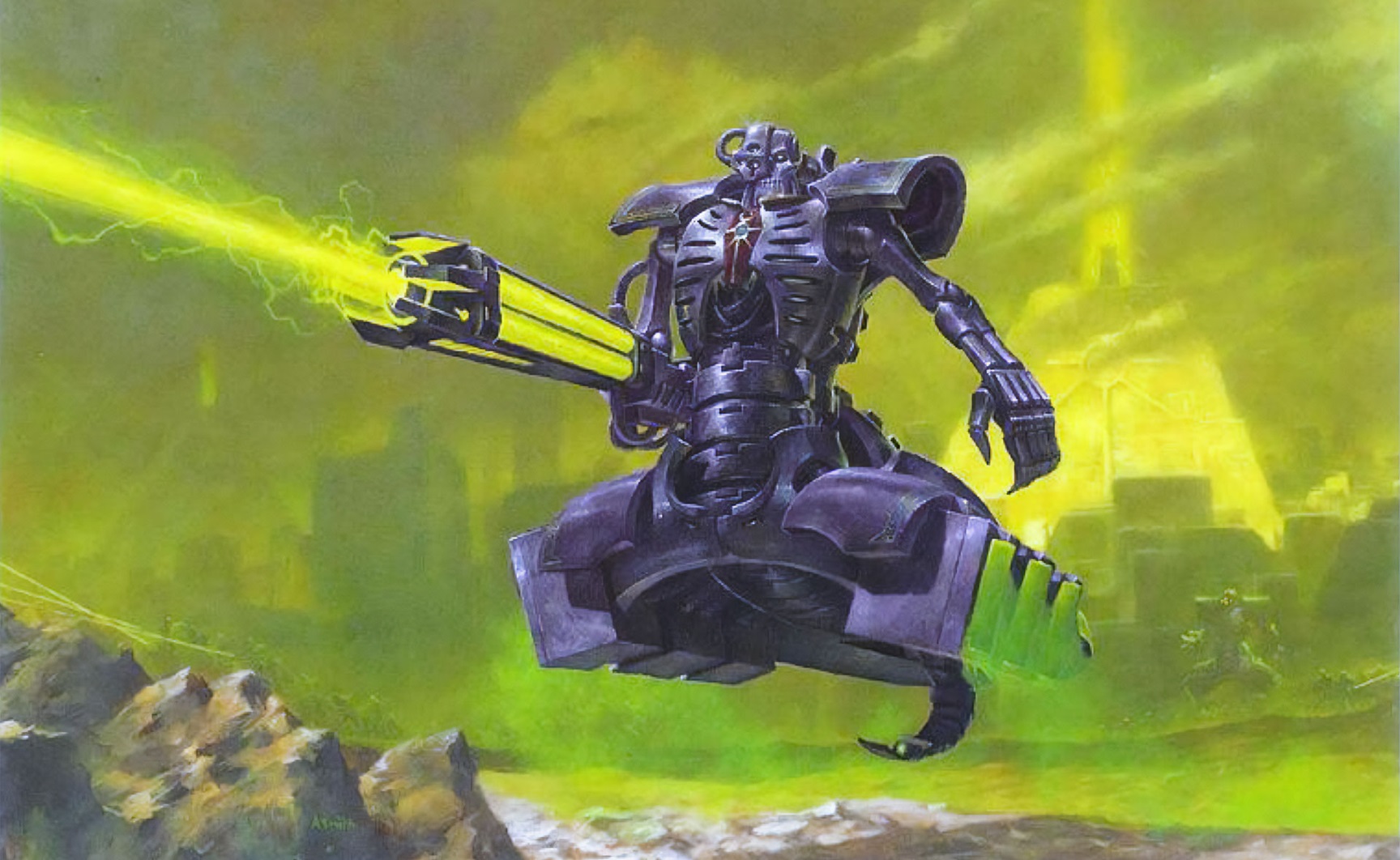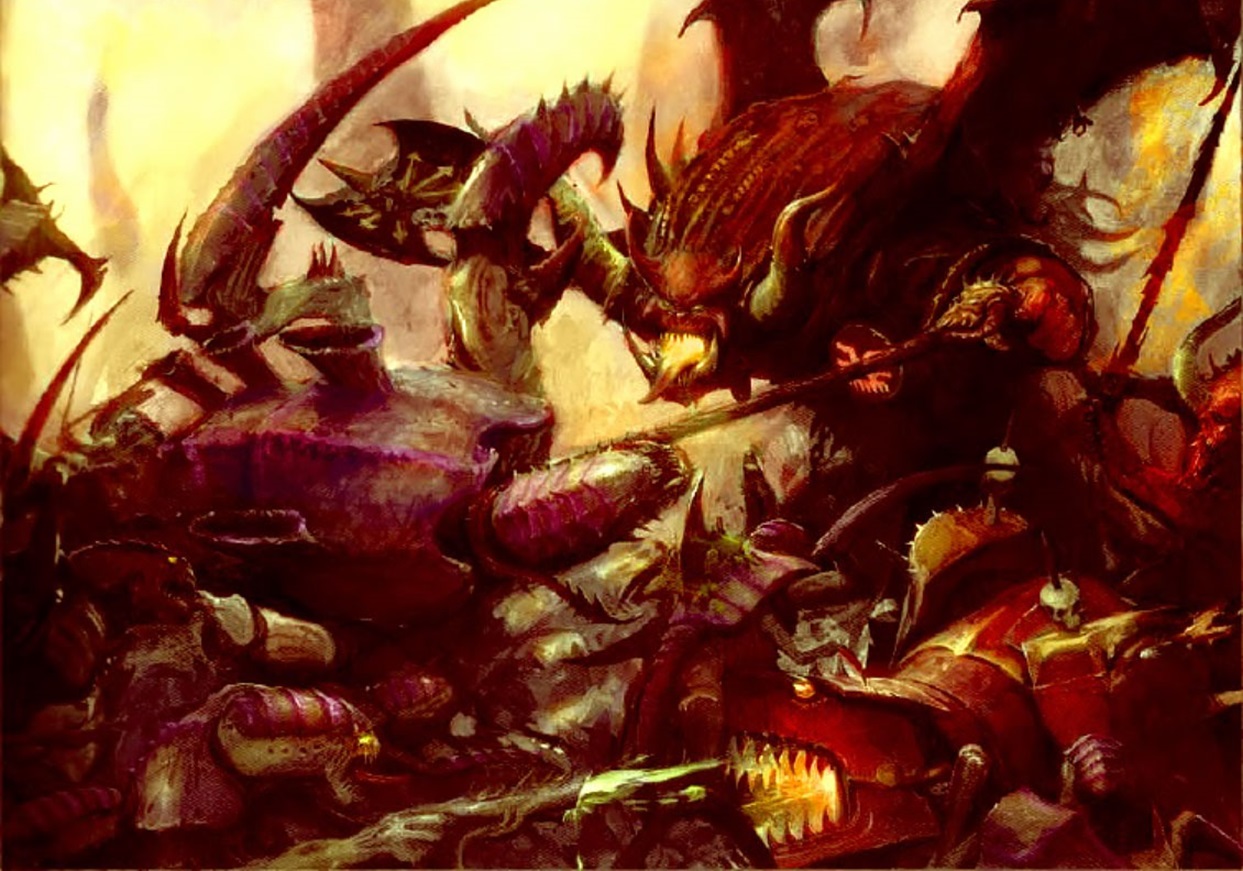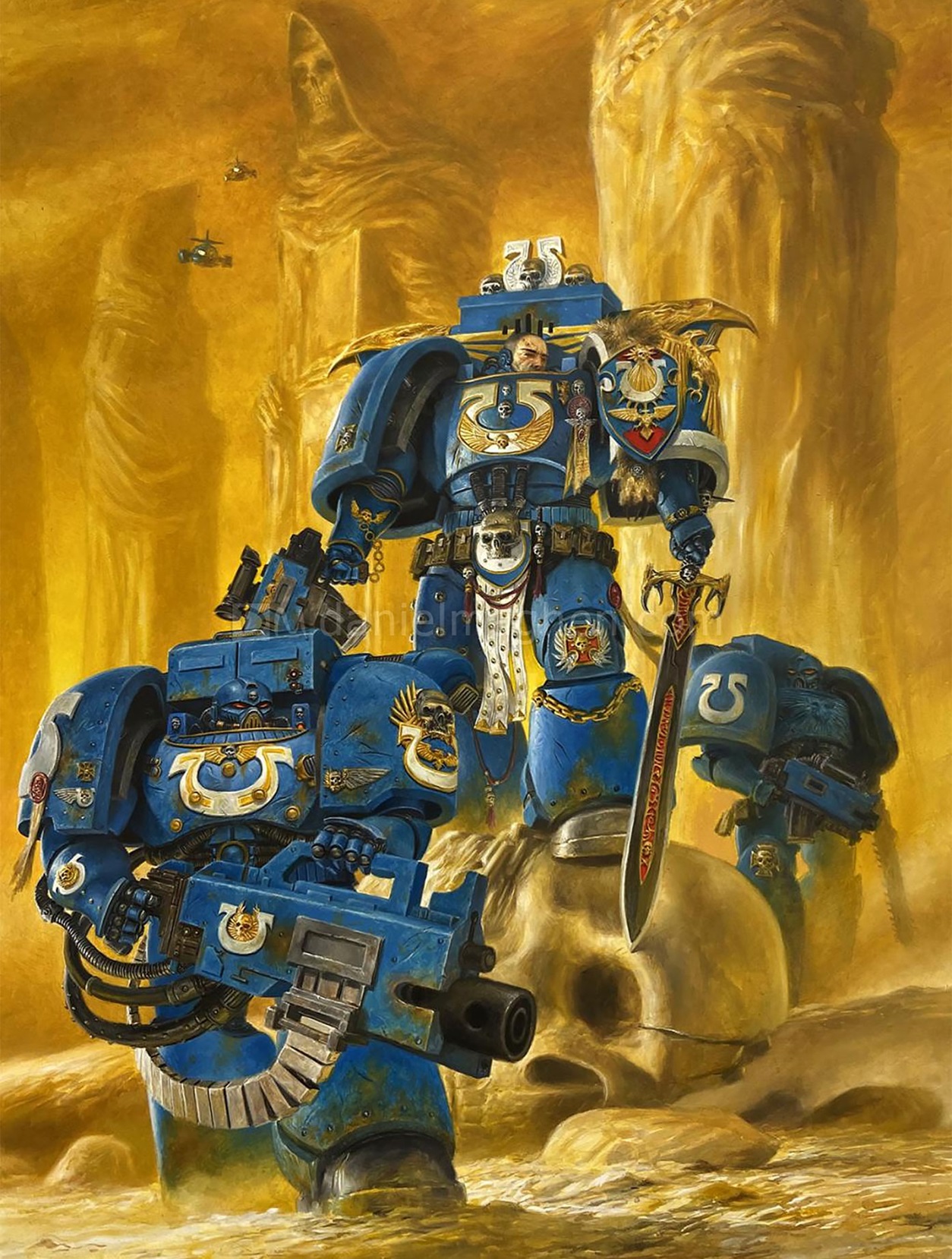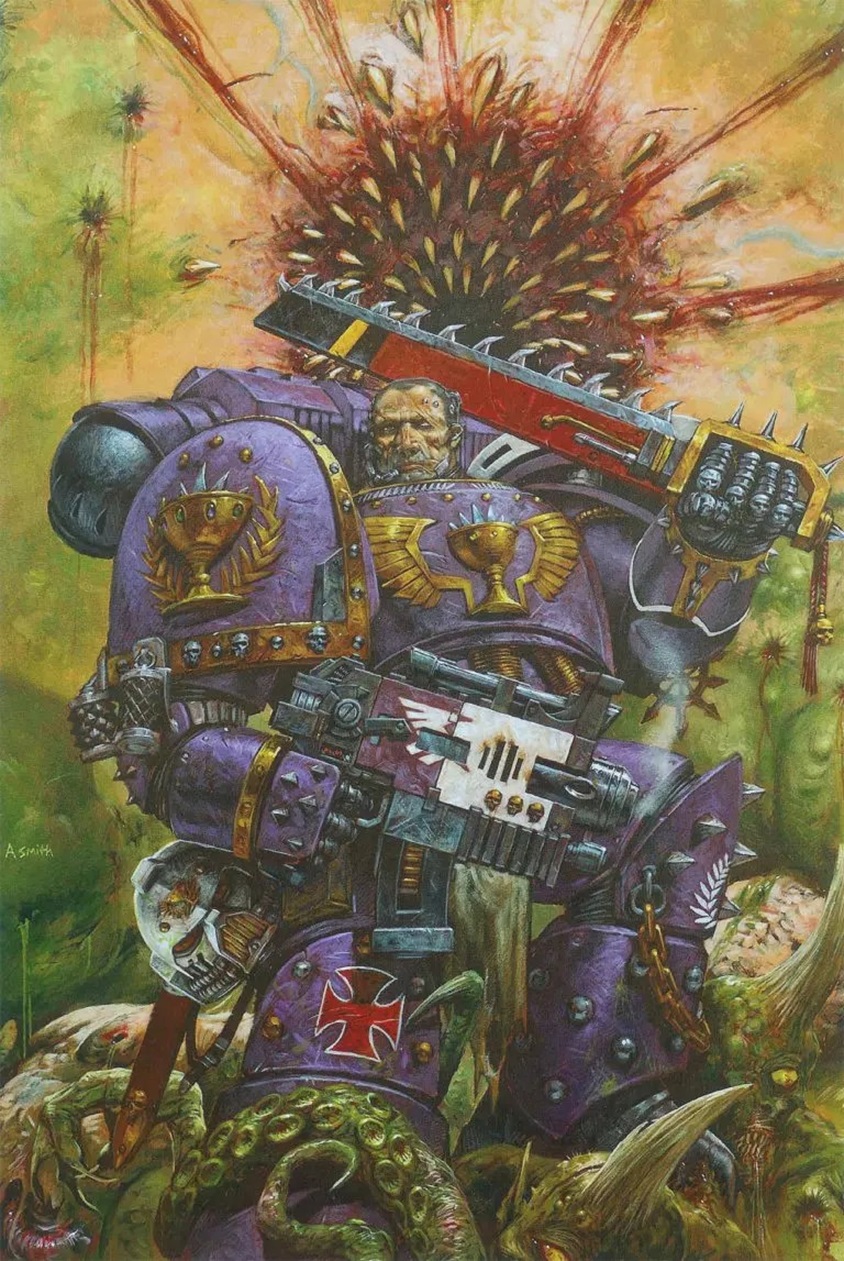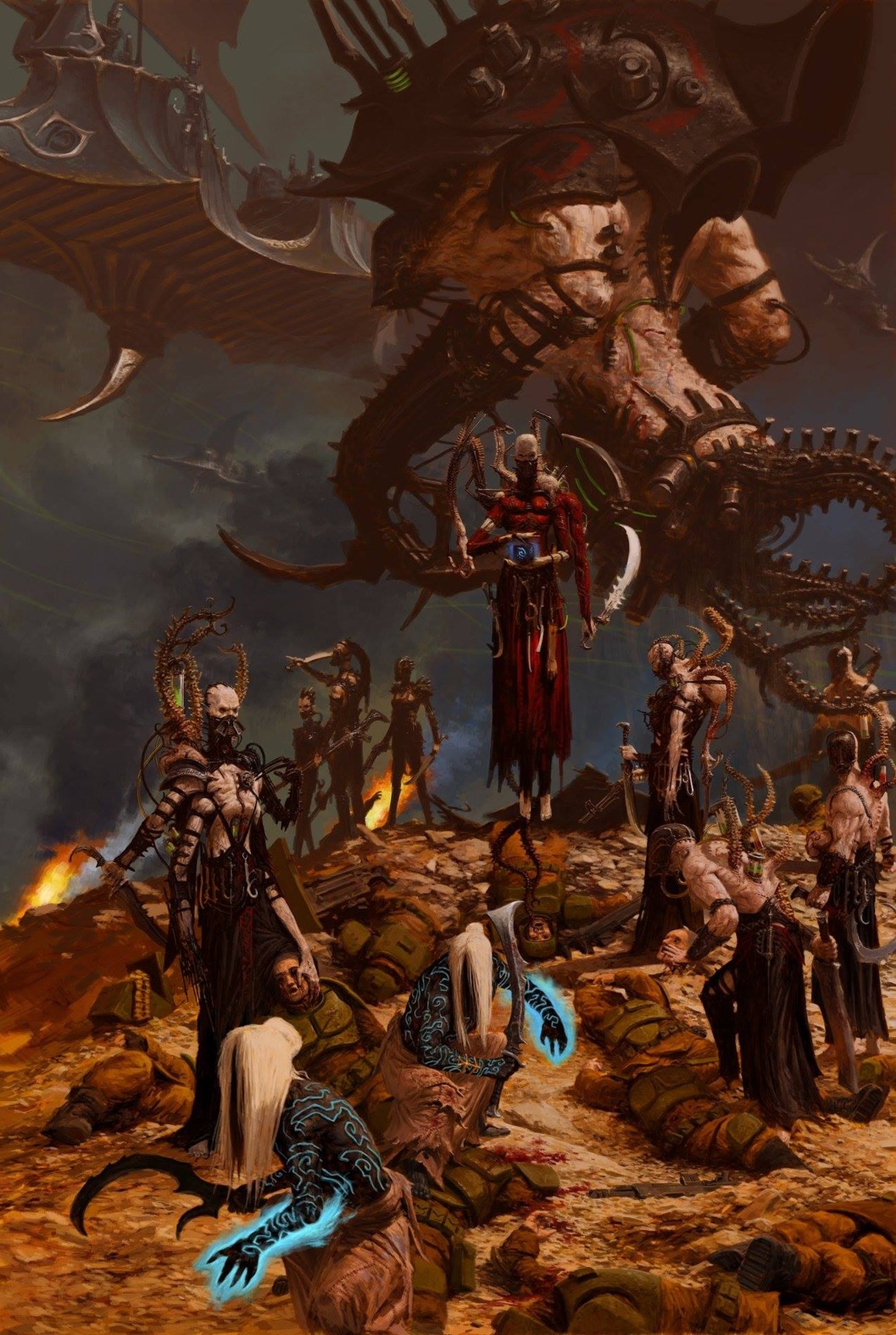
The Haemonculi Covens: Dark Eldar’s Theatre of Pain and Cruelty
A Theatre of Pain and Cruelty
This unsettling and masterful painting by Adrian Smith shows the depraved artistry of the Haemonculi Covens of the Dark Eldar, standing amidst the wreckage of war and writhing torment. Dominating the ruined battlefield is a towering Cronos Parasite Engine—part flesh, part machine, and entirely horror, stitched together like a grotesque altar to suffering. All around it swarm members of the Coven: long-limbed Haemonculi with spindly, cybernetic appendages and cruel surgical tools, their faces stretched in expressions of clinical madness. In the foreground, eerie robed figures with glowing blue limbs—Ur-Ghuls or perhaps Cronos-spawned constructs—pick through the remains of fallen foes. Smoke and fire crackle in the background, casting the scene in a hellish glow, while a baroque skimmer hovers ominously overhead. This image, once the cover of the Games Workshop Dark Eldar publication, is a nightmarish window into the soul of Commorragh’s darkest denizens.
The Lords of Flesh and Fear
The Haemonculi are ancient, sadistic flesh-sculptors who dwell in the deepest, most depraved corners of the Dark City of Commorragh. They are masters of torture, bio-alchemy, and resurrection, wielding ancient knowledge that borders on the arcane. These twisted figures reimagine the body not as a sacred vessel, but as a canvas upon which suffering is etched and rewritten. In the painting, one Haemonculus hovers above the others like a grotesque prophet, suspended by mechanical spines and clothed in tattered crimson robes. Around him, others prepare instruments or examine the remains of captured enemies, treating war not as conquest but as opportunity for new works of surgical perversion. Every movement, every glance, is measured, as though the entire battlefield is just another operating table.
The Cronos: Engine of Agony
Behind the Haemonculi looms the Cronos, an aberrant construct born of pain and fleshcraft, built not for war in the traditional sense, but to feed. It drifts over the battlefield like a bloated insect, its body a mass of tubes, syringes, and parasitic growths that extract soul essence from the living and the dying alike. Unlike most war machines, the Cronos exists to induce terror and agony—its victims’ psychic torment fuels its own vile power. In Adrian Smith’s painting, its presence anchors the entire piece, a hulking monstrosity that underscores the scale and depravity of the Coven’s ambitions. It is not just a beast of war—it is a monument to the Haemonculi’s philosophy. Where it goes, reality twists and minds unravel.
The Dark Eldar’s Cruel Dominion
The Dark Eldar—also known as the Drukhari—are sadistic raiders from the Webway city of Commorragh. Unlike their Craftworld kin, they do not walk a path of discipline but one of excess, sustained by inflicting pain and suffering upon others. Their souls, constantly threatened by the predations of Slaanesh, can only be preserved by consuming the anguish of others. The Haemonculi Covens are a cornerstone of this survival strategy, offering rejuvenation, resurrection, and the dark science of soul theft. Within the twisted social structure of Commorragh, these flesh-masters hold power not through command, but through indispensability. They are the necromancers, surgeons, and artists of agony in a society built upon torment.
Adrian Smith’s Vision of Horror
Adrian Smith’s depiction is a visceral masterpiece, blending baroque sci-fi with body horror in a way only Oldhammer-era artists truly dared. Every figure is grotesque yet strangely elegant, shaped by aesthetic logic that prizes torment and transformation over symmetry or beauty. The color palette is deeply saturated—reds and ochres smother the landscape, pierced only by the eerie glow of unnatural energies. In every limb, every weapon, every strange apparatus, you see the mark of Adrian Smith’s distinctive brushwork—loose but deliberate, capturing the energy of chaos without losing form. This is not just a battle scene—it is a ritual of unmaking, a glimpse into the demented rituals of beings who have long abandoned morality for mastery. It is one of the most enduring and terrifying portrayals of the Haemonculi in Warhammer art history.


